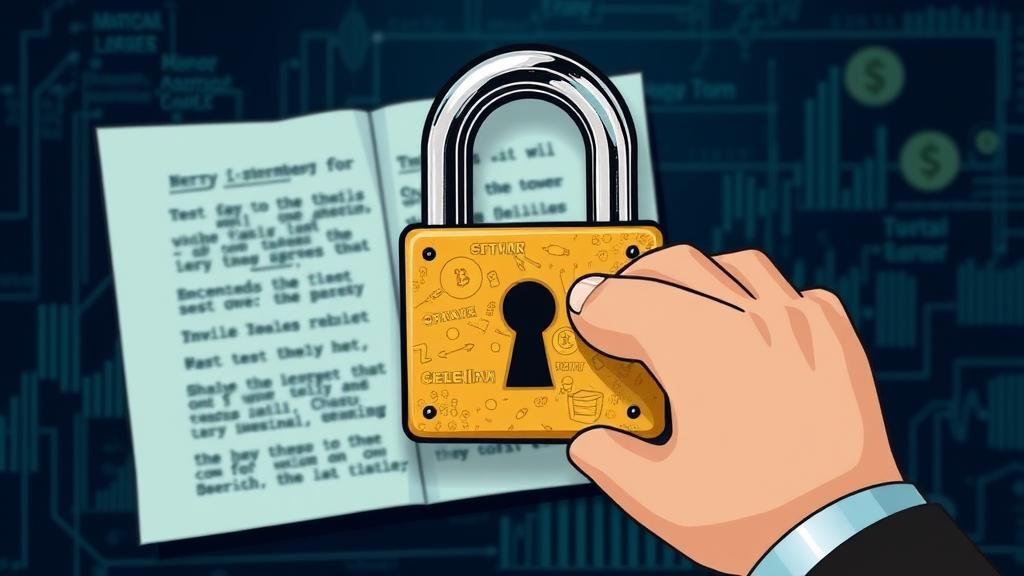How to Decrypt Ciphered Texts Using Key-Based Treasure Clues
Introduction to Ciphered Texts and Key-Based Decryption
Ciphered texts, or ciphertexts, are messages that have been transformed through algorithms to conceal their meaning. This form of communication, widely used throughout history, serves both to protect sensitive information and to foster intrigue in puzzle-solving activities. Understanding how to decrypt these texts using key-based treasure clues can unveil hidden meanings and enhance logical reasoning skills. This article guides you through the fundamental principles and methodologies utilized in this fascinating area of cryptography.
Understanding Basic Cryptography
Cryptography revolves around securing communication and data from unauthorized access. At its core, encryption transforms plaintext into ciphertext using specific algorithms and keys. Decryption then reverses this process, reverting ciphertext back into readable plaintext. key is a crucial element in both processes, serving as a parameter that determines how the transformation occurs.
Types of Ciphers
There are several types of ciphers, each employing different techniques:
- Substitution Ciphers: Replace each letter in the plaintext with another letter. An example is the Caesar cipher, which shifts letters by a predetermined number of places.
- Transposition Ciphers: Rearrange letters of the plaintext without changing the actual letters themselves. The rail fence cipher is a classic example where letters are arranged in a zigzag pattern.
- Polyalphabetic Ciphers: Use multiple substitution alphabets. Vigenère cipher employs a keyword to determine the shift for each letter based on its position.
Each type has unique strengths and weaknesses, making understanding them essential for effective decryption.
The Role of Keys in Decryption
Key-based decryption significantly increases the complexity of deciphering the text. Keys function as the secret that allows the receiver to unlock the original message. In many modern encryption techniques, such as the Advanced Encryption Standard (AES), keys can vary in length (128, 192, or 256 bits), giving rise to numerous potential combinations and enhancing security.
Finding Treasure Clues for Keys
Incorporating treasure clues as keys can elevate the excitement of decryption. This method may involve both creative problem-solving and analytical skills. The clues may be simple riddles, numbers, or even historical references that point to specific letters or shifts.
- Examples of treasure clues:
- A riddle pointing to a date that indicates a shift in a Caesar cipher.
- A numerical sequence that designates positions in a transposition cipher.
Practical Methods for Decrypting Ciphered Texts Using Keys
Decrypting a cipher typically follows systematic steps. Here are practical approaches for utilizing key-based treasure clues:
1. Identify the Type of Cipher: Determine whether the cipher is a substitution or transposition. Each method has distinct decryption techniques.
2. Gather Clues: Collect clues that may indicate the key. For example, a phrase three musketeers could suggest a shift of three in a Caesar cipher.
3. Apply the Key: Once you have defined your key, apply it to the ciphertext. For example, with a simple Caesar cipher using a key of three, you would shift each letter three places back to reveal the plaintext.
4. Validate the Decrypted Message: Check if the resulting plaintext makes logical sense or contains recognizable language. If it does not, consider reevaluating the cipher type or key.
Case Study: Historical Use of Key-Based Ciphers
Throughout history, key-based ciphers have found practical applications, notably during World Wars. One famous case is the German Enigma machine, which utilized a complex system of rotors and keys for encryption. Decrypting Enigma messages required significant ingenuity. Cryptanalysts like Alan Turing and his team at Bletchley Park utilized mathematical theories and logical deductions to break the Enigma code, ultimately aiding the Allies in the war efforts.
Modern Applications of Cipher Decryption
In todays digital age, understanding how to decrypt ciphered texts can have far-reaching applications, including:
- Cybersecurity: Protecting sensitive information requires robust encryption methods, and knowledge of decryption techniques can help in fortifying networks against attacks.
- Data Recovery: Techniques are also utilized in recovering lost data that may have been encrypted or corrupted.
- Puzzles and Games: Many escape rooms and puzzle games use ciphers to challenge players, enhancing the enjoyment and engagement of the experience.
Conclusion: Mastering the Art of Decryption
Decrypting ciphered texts using key-based treasure clues is both a science and an art. By understanding the underlying principles of cryptography, exploring various cipher types, and utilizing creative clues, one can unlock messages hidden throughout history and in modern communication. Knowledge in this area is not only academically enriching but also serves practical purposes in technology and entertainment.
As a final takeaway, enhancing your skills in this intriguing field opens up a world of analytical thinking, problem-solving, and historical appreciation that extends far beyond mere puzzle-solving.



